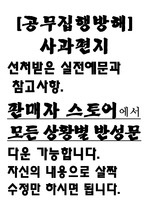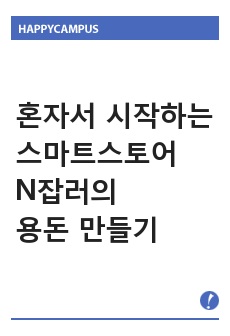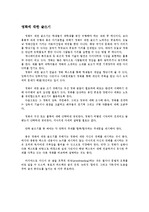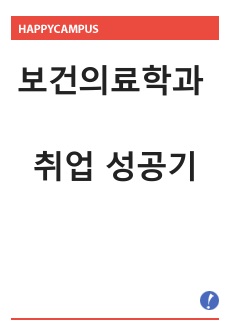CONSUMER-GENERATED LUXURY BRAND COMMUNICATION ON THE INTERNET
* 본 문서는 배포용으로 복사 및 편집이 불가합니다.
서지정보
ㆍ발행기관 : 글로벌지식마케팅경영학회(GFMC)
ㆍ수록지정보 : Global Marketing Conference
ㆍ저자명 : Anita Radón
ㆍ저자명 : Anita Radón
영어 초록
Consumers today are not passive recipients of a constructed brand identity that is communicated towards them. Instead research suggests that the consumer is in fact an active part in constructing brand meaning. Salzer-Mörling and Strannegård (2004) held that brand managers are confronted with the fact that they are not the owners of the brand who can actively manipulate brand images in the minds of passive consumers. The importance of consumption activities and how these play a part in the development of meaning has been demonstrated by authors such as Wallendorf and Arnould (1991), who interpreted the consumption rituals of Thanksgiving and explored the linkages and cleavages between consumer ideology and consumer practice. Arnould and Price (1993) investigated the relationship between client expectations and satisfaction and concluded that the narrative of the rafting experience (multiday river rafting trips in the Colorado River basin was the empirical context for their article) rather than relationships between expectations and outcomes was central to its evaluation. Belk and Costa (1998) showed the creation of fantasy consumption enclaves through processes of inventing and mythologizing tradition, and Peñaloza (2001) investigated consumers‘ cultural production processes at different levels and concluded that consumers negotiate meanings and that business activities and specific references are significant for consumers in providing authenticity. In later research it is argued that brands belong to and are created within groups, communities or tribes (e.g. Brown, Kozinets and Sherry Jr., 2003), or that consumers are actively creating brandscapes (Thompson and Arsel, 2004) neo-tribes (Cova and Cova, 2002), the concept of brand communities (Muniz and O‘Guinn, 2001; McAlexander, Schouten and Koenig, 2002; Muniz and Schau, 2005; Algesheimer, Dholakia and Herrmann, 2005), subcultures of consumption (Schouten and McAlexander, 1995), and brand cultures (Schroeder and Salzer-Mörling, 2006). Muniz and O‘Guinn (2001) emphasized the triangular relationship between consumers and the brand and consumer relationships. McAlexander, Schouten and Koenig (2002) broadened this perspective by studying customers´ relationships with a branded product and related marketing agents, institutions as well as other customers. In their view, consumers socialize around brands, which are defined as brand objects, but they still consider brand meaning as being developed first by marketers. Related to the brand community is the concept of ‘neo-tribes‘, examined by Cova and Cova (2002), who hold that a tribe is not necessarily a brand community, since brand communities are explicitly commercial, whereas tribes are not. However, when a tribe is organized around a same passion of a cult-object it exhibits many similarities with a brand community (p. 603). Alongside the concept of brand community research has viewed the consumer-producer dichotomy in new ways of co-production: the customer as co-producer (Wikström, 1996; Vargo and Lusch, 2004), the reversal of consumption and production (Firath and Venkatesh, 1993), the consumer role in production and consumption (Firath and Venkatesh, 1995), consumers as customizers and producers (Firath, Dholakia and Venkatesh, 1995), customers as active co-creators of experience (Prahalad and Ramaswamy, 2000), the concept of customerization (Wind and Rangaswamy, 2000). Bendapudi and Leone (2003) viewed customer co-production in the construction of goods and ser-vices and claimed that consumer co-production extends to meanings as well and that consumers are not ―just passive receptacles of brand identity projected by marketers; they are active co-producers of brand meanings (p.26). They called for more attention to the implications of consumer co-produced marketing images given the empowerment of consumers through the Internet. Kozinets et al. further (2004) introduced the notion of ―interagency where consumer and producer interests are embedded in one another. Quinton and Harridge-March (2010) investigated relationships in online communities and the potential influence of consumer generated communication in online discussion fora on wine. This paper views consumer generated communication on luxury brands online and its impact on luxury brand image. With the growth of the Internet and brands’ use of it so has consumer initiated sites grown. Consumer communities and brand communities are today an active participant in the creation of brand value and brand meaning. However there is still a gap in the empirical research on consumer-generated communication and how this type of communication impacts brand image. A conceptual framework for consumer community communication is presented and three empirical examples of consumer-generated communication and its impact on brand image are presented. The approach is a qualitative online study. Consumer community sites show clear examples of information, distribution and conversation aspects. This study shows that information seeking is the most prevalent in the impact on brand image. The strength of this research lies in its qualitative nature with consumer interviews and online observations of consumer-generated brand communication. Given the exploratory nature of this research the online material had to be systematized during the course of the work and could not be chosen based on a set of criteria or evaluation methods already established.참고 자료
없음"Global Marketing Conference"의 다른 논문
 THE ROLES OF GREEN PACKAGING IN UGLY FOOD PURCHASE INTE..22페이지
THE ROLES OF GREEN PACKAGING IN UGLY FOOD PURCHASE INTE..22페이지 THE IMPACT OF INDUCED AWE ON ETHICAL TOURIST BEHAVIORS5페이지
THE IMPACT OF INDUCED AWE ON ETHICAL TOURIST BEHAVIORS5페이지 A BIBLIOMETRIC ANALYSIS OF SPIRITUAL TOURISM RESEARCH15페이지
A BIBLIOMETRIC ANALYSIS OF SPIRITUAL TOURISM RESEARCH15페이지 SOCIAL NETWORK ANALYSIS AND RESPONSE TIME TESTING: CONS..11페이지
SOCIAL NETWORK ANALYSIS AND RESPONSE TIME TESTING: CONS..11페이지 THE EFFECTS OF PARA-SOCIAL INTERACTION ON ONLINE CELEBR..3페이지
THE EFFECTS OF PARA-SOCIAL INTERACTION ON ONLINE CELEBR..3페이지 THE INFLUENCE OF OPINION LEADERS ON DAILY DEALS USER’S ..3페이지
THE INFLUENCE OF OPINION LEADERS ON DAILY DEALS USER’S ..3페이지 HOW IMMERSIVE RETAILING AFFECTS CONSUMERS’ URGE TO BUY:..6페이지
HOW IMMERSIVE RETAILING AFFECTS CONSUMERS’ URGE TO BUY:..6페이지 KEY TO SUPERSTARDOM IN A GLOBALISED MARKET: THE ROLE OF..6페이지
KEY TO SUPERSTARDOM IN A GLOBALISED MARKET: THE ROLE OF..6페이지 A POST-PANDEMIC LOOK AT TOURISTS’ PERCEIVED COOLNESS OF..4페이지
A POST-PANDEMIC LOOK AT TOURISTS’ PERCEIVED COOLNESS OF..4페이지 EXTRACTING OFFLINE RETAIL SHOPPING PATTERNS: OLLABORATI..5페이지
EXTRACTING OFFLINE RETAIL SHOPPING PATTERNS: OLLABORATI..5페이지

























